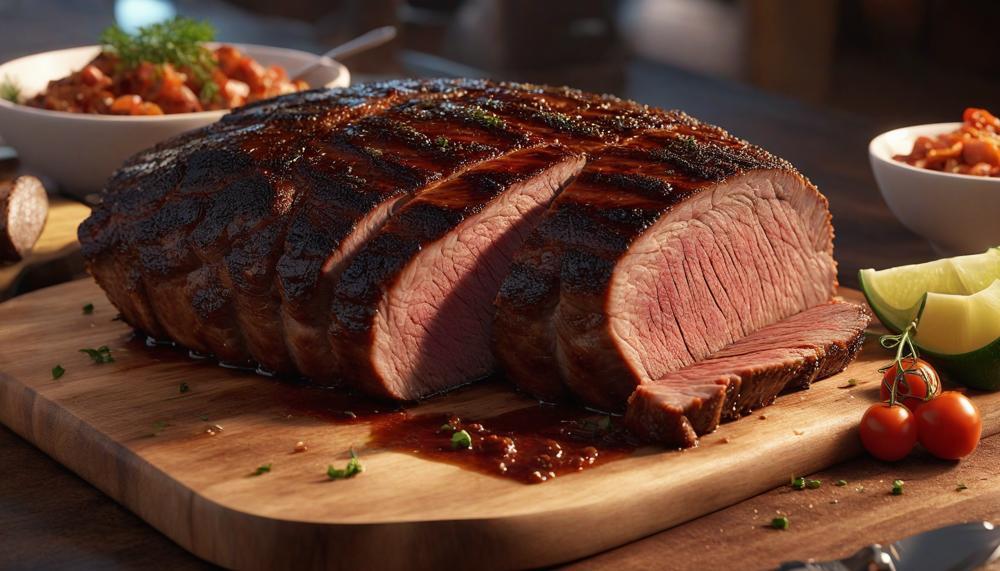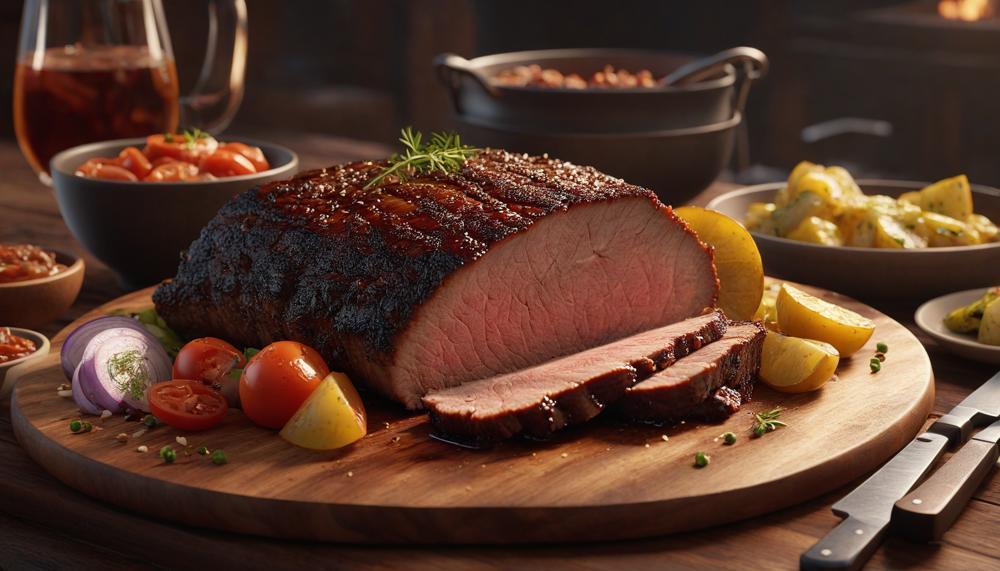Yes, you can, but with a crucial caveat: temperature control is paramount. Resting a brisket isn’t just about waiting—it’s a critical step in the barbecue process that impacts taste and texture significantly. When done right, it allows the meat’s juices to redistribute, ensuring every slice remains tender and moist.
However, extending the resting period to 12 hours requires meticulous planning and the right equipment to maintain a safe temperature above 140°F, warding off bacterial risks.
In the world of barbecue, mastering the art of resting can elevate your brisket from good to exceptional. To help you understand the nuances and make informed decisions, let’s delve into the details.
Key Takeaways:
- Resting allows juices to redistribute, keeping brisket moist and flavorful.
- Temperature control above 140°F is crucial to prevent bacterial growth.
- Top BBQ joints often rest briskets for several hours, sometimes up to 12, using specialized equipment.
Stay tuned as we explore the ins and outs of safely resting a brisket for extended periods, ensuring your next barbecue experience is nothing short of extraordinary. Ready to elevate your BBQ game? Let’s get started.
Contents
Understanding Brisket Resting Basics
The importance of resting a brisket after cooking lies in ensuring it remains tender and juicy. During cooking, heat causes the muscle fibers in the brisket to contract, pushing out moisture. Resting allows these fibers to relax, facilitating moisture reabsorption back into the meat. This process is critical for achieving a succulent texture and enhancing the overall eating experience.
Additionally, resting helps in the redistribution of juices throughout the brisket. Without this period, cutting into the brisket too soon can cause these flavorful juices to spill out onto the cutting board rather than remaining inside the meat. This can lead to a drier and less flavoursome brisket.
Experts recommend resting briskets for at least an hour after cooking, but many prefer longer periods, even up to several hours. This extended rest not only enhances tenderness but also allows for optimal flavour development. Maintaining a safe internal temperature above 140°F during resting is essential to prevent bacterial growth and ensure food safety.
In summary, resting a brisket after cooking is crucial for:
- Retaining moisture and tenderness by allowing muscle fibers to relax.
- Ensuring the juices redistribute throughout the meat for enhanced flavour.
- Preventing the brisket from drying out when sliced.
Preparing for the Rest

To ensure a brisket is optimally prepared for a 12-hour rest, meticulous attention to detail during the resting phase is essential. The process is straightforward but requires careful management of temperature and environment to maintain the meat’s quality and safety.
Steps to Prepare a Brisket for a 12-Hour Rest:
- Wrap the Brisket: Immediately after smoking, wrap the brisket tightly in either aluminum foil or butcher paper. This wrap helps retain heat and moisture, essential for the resting process.
- Insulate: Place the wrapped brisket in a cooler or an insulated container to keep it warm. For additional insulation, pack towels or blankets around the brisket.
- Monitor Temperature: It’s vital to keep the brisket’s temperature above 140°F (60°C) to prevent bacterial growth. Use a meat thermometer to check the temperature periodically.
- Final Steps Before Serving: Before serving, remove the brisket from the insulation and let it rest at room temperature for a few minutes. This step helps stabilize the internal temperature.
- Slicing: Always slice the brisket against the grain to ensure each piece is tender and maintains its juices.
Executing the Resting Period
| Executing the Resting Period | Answer | |
| How do you properly execute the resting period for a brisket? | Properly executing the resting period for a brisket is crucial to preserving its juiciness and flavour. Follow these steps: | |
| Step 1: Importance of Resting |
|
|
| Step 2: Benefits of Resting |
|
|
| Step 3: Ideal Rest Time |
|
|
| Step 4: Resting vs. Holding |
|
Executing the resting period for a brisket involves more than just waiting; it’s a strategic step to enhance its flavour and texture. Resting allows the brisket’s juices to settle evenly, preserving moisture and ensuring each slice is tender.
This method not only retains the natural savouriness but also prevents the meat from becoming dry. Aim for an hour of resting time, adjusting up to two hours if needed, but never compromising on less than 45 minutes.
Finishing Steps After Resting
After the brisket has rested adequately, the essential finishing steps ensure the best taste and texture upon serving. These steps are critical for achieving a tender and juicy brisket:
- Check the Brisket’s Temperature: It should still be warm. If needed, a gentle reheating can be performed, ensuring it doesn’t cook further but retains optimal serving temperature.
- Trim Excess Fat: Depending on your preference, now is the time to trim away any undesirable excess fat that didn’t render out during the cooking process.
- Slicing: The brisket should be sliced against the grain. This cutting method is crucial as it makes the meat more tender and easier to eat. Use a sharp knife and make clean, even slices to preserve the meat’s integrity and appearance.
- Serve Immediately: Once sliced, the brisket should be served right away to maintain its heat and moisture. Delaying can result in a loss of the desirable textures you’ve worked hard to create.
- Optional Sauces or Rubs: If desired, apply additional rubs or sauces to enhance the flavor. This step is optional and should be tailored to personal or regional tastes.
Conclusion
In the realm of barbecue mastery, the question of whether you can rest a brisket for 12 hours yields a resounding “yes,” with careful attention to detail. Beyond merely waiting, this extended rest period is a strategic maneuver crucial for enhancing flavor and texture. By allowing the brisket to rest, juices redistribute evenly throughout the meat, ensuring each slice bursts with moisture and savory goodness.
However, the key lies not just in patience but in precision—maintaining a safe temperature above 140°F is non-negotiable to prevent any bacterial risks. This meticulous approach ensures that your culinary creation not only delights but also remains safe for consumption.
Whether you’re a seasoned pitmaster or an aspiring barbecue enthusiast, understanding the nuances of brisket resting can elevate your cooking to new heights. From wrapping the brisket snugly post-cooking to insulating it properly and monitoring temperatures, each step plays a vital role in achieving that tender, mouthwatering result.
So, as you embark on your next barbecue adventure, remember: patience pays off, and with the right techniques, your 12-hour rested brisket will be a masterpiece ready to impress your guests.






